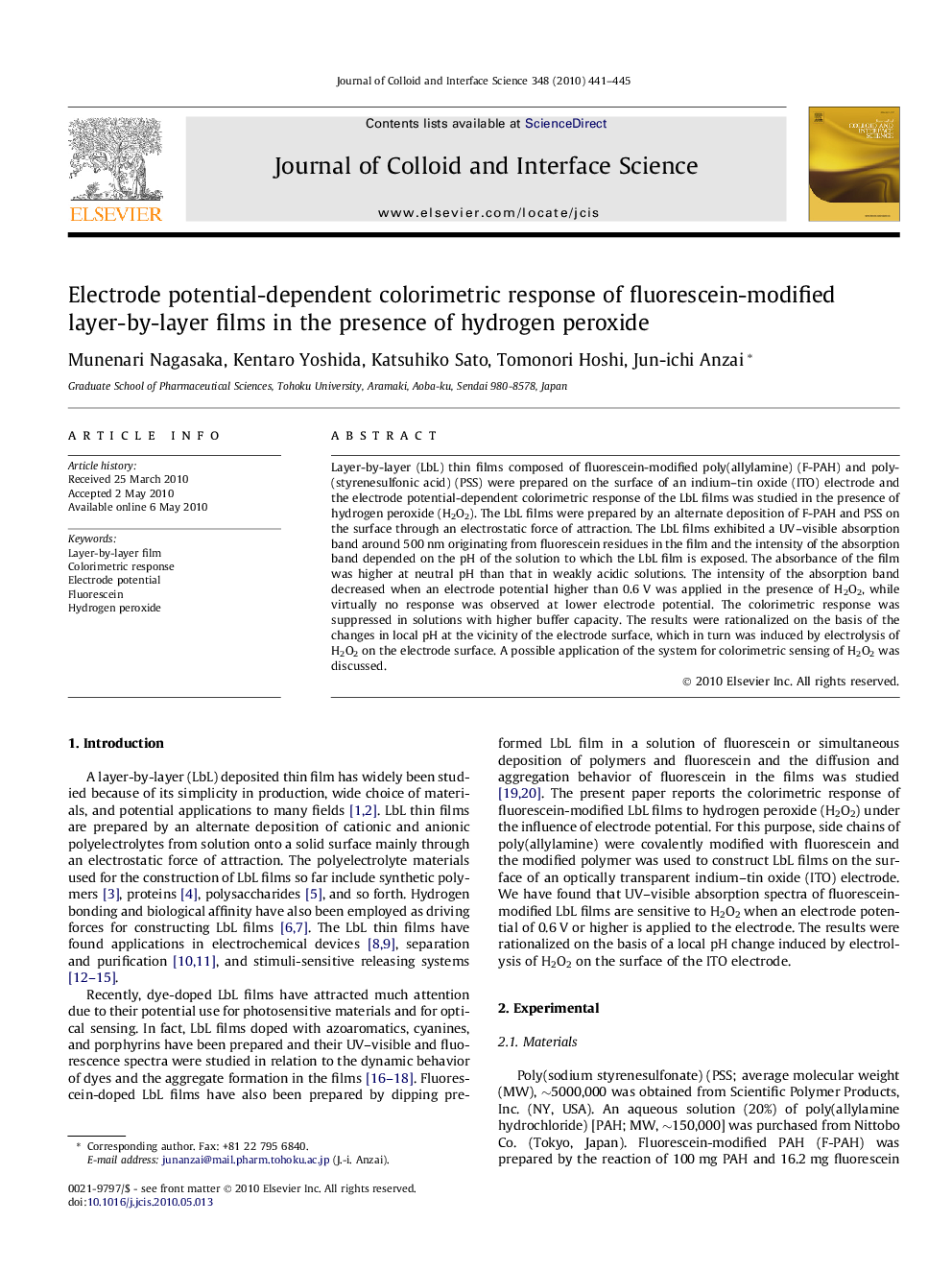| Article ID | Journal | Published Year | Pages | File Type |
|---|---|---|---|---|
| 609652 | Journal of Colloid and Interface Science | 2010 | 5 Pages |
Layer-by-layer (LbL) thin films composed of fluorescein-modified poly(allylamine) (F-PAH) and poly(styrenesulfonic acid) (PSS) were prepared on the surface of an indium–tin oxide (ITO) electrode and the electrode potential-dependent colorimetric response of the LbL films was studied in the presence of hydrogen peroxide (H2O2). The LbL films were prepared by an alternate deposition of F-PAH and PSS on the surface through an electrostatic force of attraction. The LbL films exhibited a UV–visible absorption band around 500 nm originating from fluorescein residues in the film and the intensity of the absorption band depended on the pH of the solution to which the LbL film is exposed. The absorbance of the film was higher at neutral pH than that in weakly acidic solutions. The intensity of the absorption band decreased when an electrode potential higher than 0.6 V was applied in the presence of H2O2, while virtually no response was observed at lower electrode potential. The colorimetric response was suppressed in solutions with higher buffer capacity. The results were rationalized on the basis of the changes in local pH at the vicinity of the electrode surface, which in turn was induced by electrolysis of H2O2 on the electrode surface. A possible application of the system for colorimetric sensing of H2O2 was discussed.
Graphical abstractUV–visible absorption spectrum of fluorescein-containing LbL film depends on the electric potential applied in the presence of H2O2.Figure optionsDownload full-size imageDownload high-quality image (104 K)Download as PowerPoint slide
